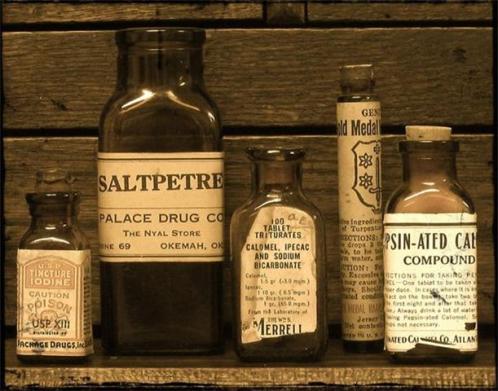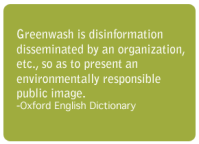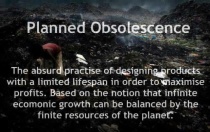Margarine v butter: are synthetic spreads toast?
Sales of margarine are in decline, due to a combination of reformulated recipes, price, health and taste. Do you defend marge, or is butter simply better?

Margarine: makes wonderfully crisp shortcrust pastry. Photograph: David Sillitoe for the Guardian
Butter v marg: it’s a fight that has gone on for decades. On one side, there’s butter – rich, creamy, defiantly full-fat and made for millennia by churning the milk or cream from cattle. On the other, there’s margarine: the arriviste spread invented in the 1860s. It might not taste delicious, and it doesn’t sink into your toast like butter, but for decades margarine has ridden a wave of success as the “healthy” alternative.
No longer. Sales of margarine have plummeted in the last year, according to Kantar, with “health” spreads dropping 7.4% in sales. Flora has been particularly badly hit, losing £24m in sales, partly due to reformulating its recipe.
Meanwhile, butter is back in vogue. Brits bought 8.7% more blocks of butter last year, and 6% more spreadable tubs. This is partly due to the “narrowing price gap between butter and margarine,” Tim Eales of IRI told The Grocer, but also to the home baking revival led by Mary Berry, Paul Hollywood and co. We’re all sticking unsalted butter in our sponges these days.
A yen for natural, unprocessed produce could also be a factor. “Since all the food scandals of the last 10 years, people are thinking about where their food comes from – butter is perceived as ‘pure’,” says food writer Signe Johansen. But is marg really out for the count? Big brands are owned by powerful multinationals such as Unilever, with huge marketing budgets. Don’t rule spreads out just yet.
Margarine was invented in 1869 by a French food scientist, Hippolyte Mège-Mouriès, who responded to a challenge by Napoleon III. Napoleon wanted to find a long-life alternative to butter to feed troops in the Franco-Prussian war. Mège-Mouriès mixed skimmed milk, water and beef fat to create a substance similar to butter in texture, if not in taste. He called it “oleomargarine” after margarites, the Greek word for pearls – a reference to its pearly sheen. In 1871 he sold the patent to Jurgens, a Dutch firm now part of Unilever.
Beef fat was soon replaced by cheaper hydrogenated and non-hydrogenated vegetable oils. “Margarine gained a foothold during the first world war,” says food writer and historian Bee Wilson. “George Orwell wrote of the ‘great war’ that what he remembered most was not all the deaths but all the margarine. But at this stage people recognised it was an inferior substitute for butter: an ersatz food, like drinking chicory instead of coffee.”
In the second world war, British margarine brands were legally required to add vitamins to their recipes. “The move in status to margarine as a health food, marketing itself as a superior alternative, happened after the war,” says Wilson. Added “healthy” extras – vitamins, omega-3s, unpronounceables that lower your cholesterol – are still a mainstay of the market.
But while margarine has spent decades fighting butter on the health front, what about taste? “Margarine has never been able to replicate the flavour of true butter,” says Johansen. This despite the fact many brands add milk and cream to their spreads. “I Can’t Believe It’s Not Butter”? Really? I can.
Unsurprisingly, it’s hard to find a defendant of margarine among food writers and chefs. One of the few exceptions is Marguerite Patten, who a fan of baking with Stork. Indeed, Stork does make for wonderfully crisp shortcrust pastry.
Margarine has taken a bashing on the health front in recent years, too. Negative press about trans fats in the 00s saw many brands remove hydrogenated fats from their spreads and reformulate their recipes. Growing suspicion of processed foods has led many consumers to return to butter. As Johansen puts it: “If you want a healthy heart, eat more vegetables.”
And yet, and yet. I’m looking at a tub of Pure Dairy-Free Soya Spread. It contains 14g saturated fat per 100g, compared to butter’s 54%. For many consumers, such stats still outweigh taste when it comes to deciding what’s on their toast. And what about vegans, and those with lactose intolerance? Margarine can fulfil needs that butter can’t.
It will never win any taste awards, but there is still a place for margarine on the supermarket shelves – even if there isn’t one for it in most food lovers’ fridges.
Opinion:
I have heard it said… or did I read it? That margarine is one molecule short of being plastic. Which just begs the question; would you melt your Tupperware to spread on your toast?
Whether that is true or not, I can’t remember the reference, the fact is that butter and margarine are from different planets.
I have both in the house. Principally, I use butter, but the marg comes in handy if I run out of soft butter. In a typical month I would use 7x250gm packs of butter, whereas a 250gm pot of marg lasts the whole month, and into the next.
Don’t even think about suggesting that I soften the butter in the microwave! I wouldn’t have one of those in the house; I have even thrown a new one out of a restaurant kitchen. Microwave ovens are pure evil!
 “In the mid-1970s Russia banned microwaves. Now you may think that is pretty silly, until you look at the latest reports on how they f**k-up food beyond all recognition. More recent studies have shown that microwave ovens totally alter the structure of food, so much so, that it isn’t food anymore.
“In the mid-1970s Russia banned microwaves. Now you may think that is pretty silly, until you look at the latest reports on how they f**k-up food beyond all recognition. More recent studies have shown that microwave ovens totally alter the structure of food, so much so, that it isn’t food anymore.
Yes, Russia made a good move.
Microwaves should be banned globally, but of course that’ll never happen. The microwave oven market is big. Corporations like this because there’s a lot of profit. Because the corporations run America, America will continue to have microwave ovens and obesity, yes, microwave ovens are a part of the obesity problem.” – From a Make you Fink on Friday post a year ago; feel free to take your microwave to the scrap-metal yard.
The evils of butter vs the benefits or margarine were touted by the margarine manufacturers who suppressed all evidence that didn’t fit their claims.
The same happened to natural dripping and lard vs vegetable cooking oils. The same happened to milk vs pateurised milk; I have drunk pure unpasteurised milk throughout much of my life and have never suffered the maladies as claimed.
No consideration was ever given to your health. Oh, they said so, because that’s what you wanted to hear. Nobody ever challenged it.
But people are beginning to see through this veil of secrecy, food scandals are more frequently being brought to the fore and people are stopping to think.
When are you going to stop and fink?






















Posted by livingsimplyfree on July 26, 2013 at 6:27 pm
I grew up on butter, love the taste of it, but eat it sparingly now. Margarine was something I never had until as an adult tasted it at a friend’s home. It was disgusting to me. I won’t buy it, Period! The grand children have margarine at home often, but remark that they like “my” butter better. I do pay more for mine by buying the organic brand made from grass fed cows. My advice to anyone is to have the real thing or nothing at all. Oh and microwaves, nope don’t have or use them. I leave butter right out on the counter, just like I learned as a child.
LikeLike
Posted by argentumvulgaris on July 28, 2013 at 11:26 am
>lsf, butter will always be more expensive than ‘plastic’. In cooler weather I leave the butter out, but Rio’s temps are often high enough to make it rancid in an hour or two in the summer.
AV
LikeLike
Posted by roughseasinthemed on July 27, 2013 at 6:41 pm
It’s half eleven and I need to go back to bed. What lsf said, more or less. I must have written about all this a zilliion times and being a wishful vegan, the only butter that gets bought is for him, as he comes out in a rash with that nasty petrochemical stuff.
Microwaves? Good things. Flogged one for a tenner a few years ago. Wouldn’t dream of using one.
LikeLike
Posted by argentumvulgaris on July 28, 2013 at 11:24 am
>rough, I like that phrase ‘petrochemical stuff’, makes it sound even more dastardly.
AV
LikeLike
Posted by Alex Jones on July 29, 2013 at 10:27 am
Plastic on toast, yum.
LikeLike
Posted by argentumvulgaris on July 29, 2013 at 1:43 pm
>Alex, do you prefer coloured Tupperware, or the transparent kind? 🙂
AV
LikeLike